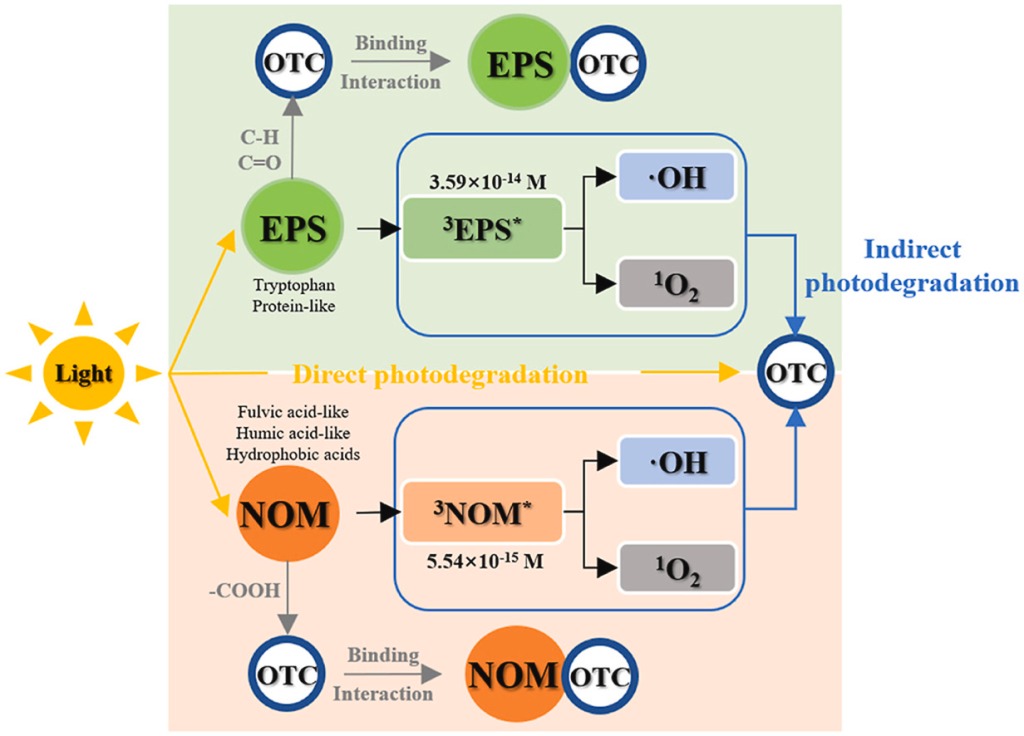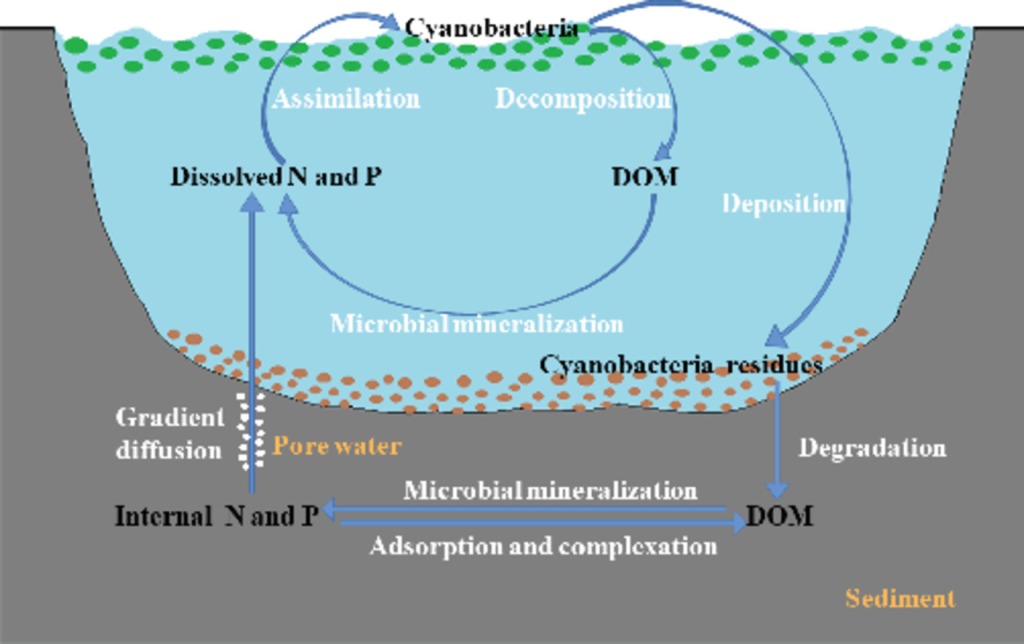
Authors
Lingling Wan, Lu Cao, Chunlei Song, Xiuyun Cao, and Yiyong Zhou
To explore the effect of different types of dissolved organic matter (DOM) decomposition on nutrient cycling pathways and the microbial loop, four lakes with different DOM sources were investigated monthly. In Lake Tangxun, Dolichospermum decay released highly labile dissolved organic nitrogen into the water column. This induced bacterial organic nitrogen decomposition, as indicated by the increased abundance of gltB, gltD, gdh, and glnA as well as aminopeptidase activity. Genes associated with dissimilatory nitrate reduction to ammonium further fueled ammonium accumulation, driving Microcystis blooms in the summer. In Lake Zhiyin, fish bait deposits (high nitrogen, similar to Dolichospermum detritus) also caused Microcystis blooms. Detritus from Microcystis decomposition then produced high levels of labile dissolved organic phosphorus, inducing phosphatase activity and increasing soluble reactive phosphorus concentrations from September to April in Lakes Tangxun and Zhiyin. The high refractory DOM from macrophytes in Lake Houguan led to insufficient nutrient availability, leading to nutrient mutualism between algae and bacteria. The high levels of labile dissolved organic carbon from terrestrial detritus in Lake Yandong increased bacterial biomass and production, resulting in low chlorophyll content due to the competitive relationship between algal and bacterial nutrient requirements. Therefore, different DOM compositions induce unique connections among available nutrients, algae, and bacteria in the microbial loop.









